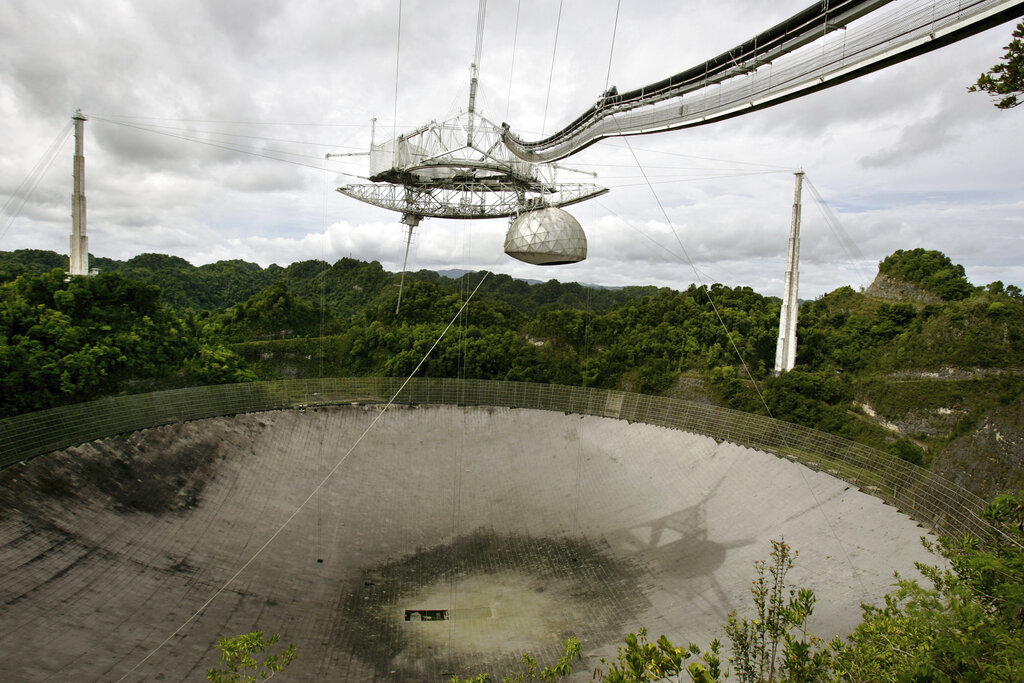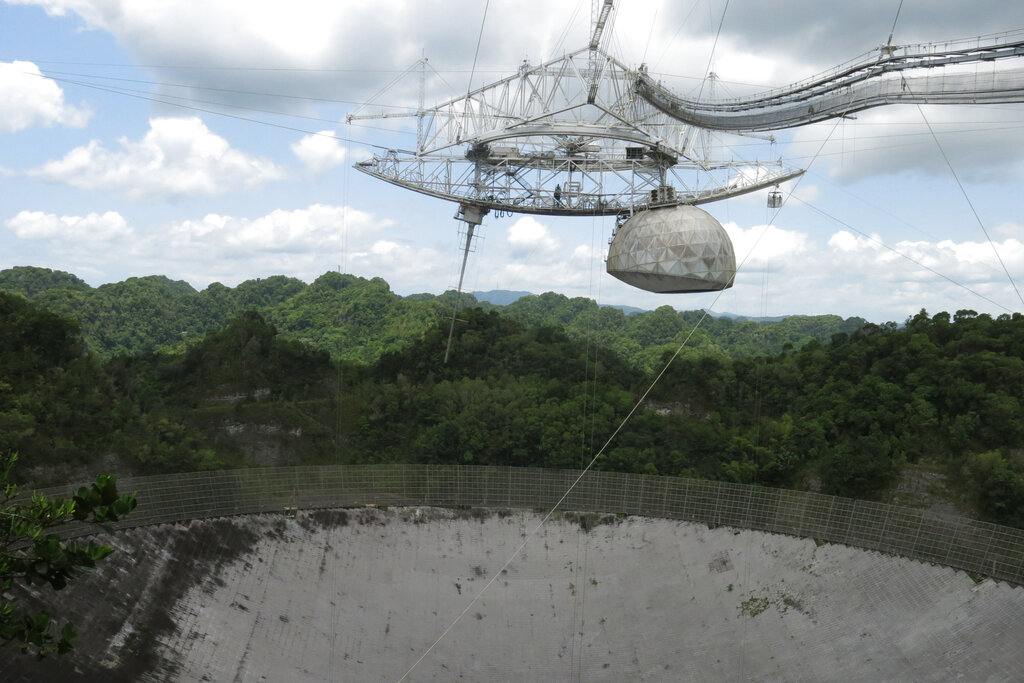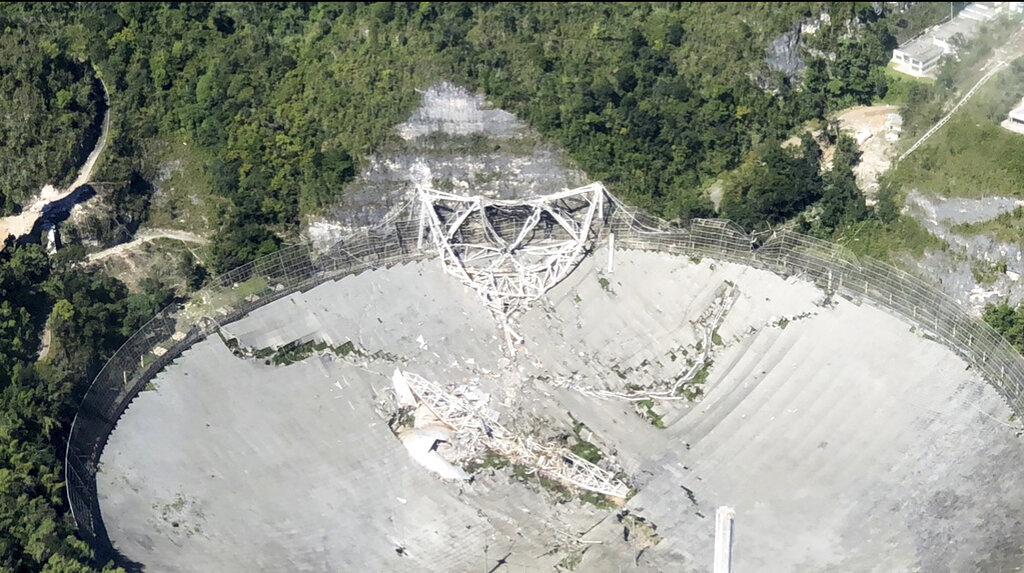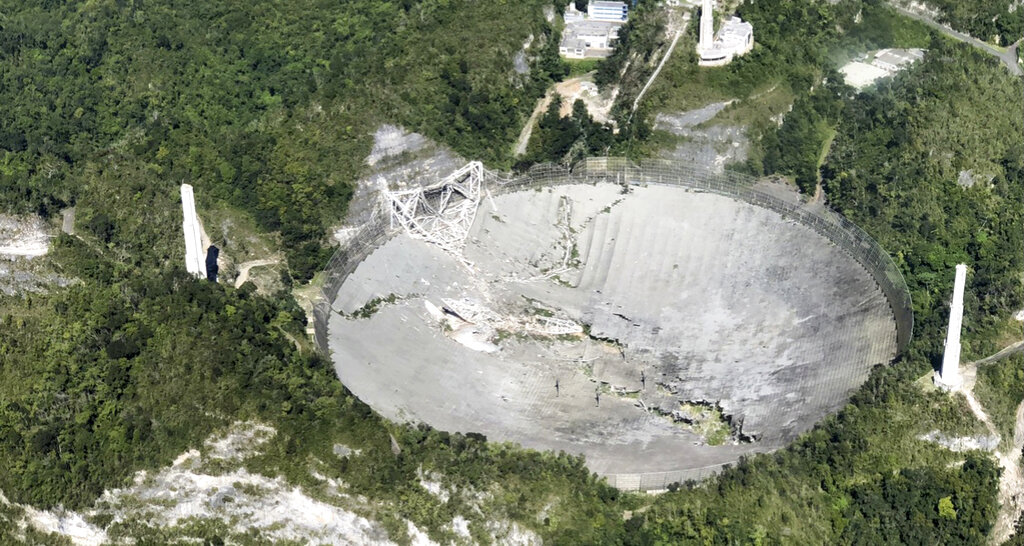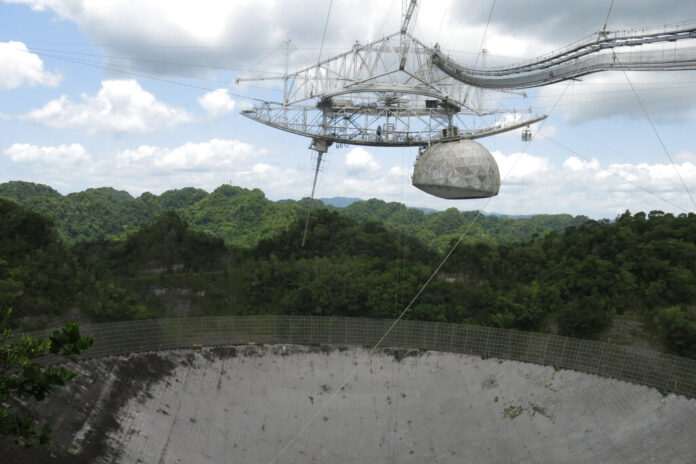
The collapse of the massive radio telescope at the Arecibo Observatory in Puerto Rico on Dec. 1 was felt more than 2,000 miles away in Brownsville, in a figurative sense at least.
The Arecibo Remote Command Center (ARCC), founded at the University of Texas at Brownsville in 2006, was named for the 57-year-old telescope, the largest in the world until the Five-hundred-meter Aperture Spherical Telescope (FAST) came online in southern China in September 2019.
ARCC was created by former UTB/University of Texas Rio Grande Valley physics associate professor Rick Jenet to get students involved in radio astronomy research at an early stage, according to Teviet Creighton, director of UTRGV’s Center for Advanced Radio Astronomy, which grew out of ARCC and now includes ARCC and the university’s STARGATE radio ground station project.
“One of the first things (Jenet) did was he got a significant grant to create (ARCC), which was a small facility on campus for a research-in-education program that was focused on getting students from the high school, undergraduate and graduate level all involved in research right from the start of their careers,” Creighton said.
When UTB became UTRGV, CARA was the first research center incorporated into the new university, he said.
The telescope, part of the observatory also known as the National Astronomy and Ionosphere Center and owned by U.S. National Science Foundation, sustained damage to its 300-meter dish in August when a cable supporting the overheard receiver platform came loose. Planned repairs were abandoned when another cable snapped on Nov. 6, compromising the telescope’s structural integrity and posing a hazard. The NSF was working on a plan to dismantle the historic instrument when it collapsed.
Creighton said CARA students were involved in a number of discoveries working with the Arecibo telescope remotely.
“We discovered a lot of interesting exotic stars, including one particularly interesting thing, which was a double neutron star system that we discovered using data from Arecibo — one of our students in fact,” he said.
Creighton noted that UTRGV students were using the Arecibo telescope until it was knocked offline, though the ARCC program was no longer dependent on the instrument for research.
“It was still an important part of our research portfolio, but we had diversified quite a bit since the early days, so a lot of our own radio astronomy research and radio technology development research at CARA, we’ve got a number of programs that involve basically radio observatories and systems that we are designing and building ourselves,” he said. “A lot of our research is done using instruments that we have designed and built.”
The first radio observatory built by CARA students and faculty built is the Low Frequency All Sky Monitor, or LoFASM, which consists of five stations scattered across the United States, each comprised of a “phased array” telescope, Creighton said.
“We collect data from that, so we have a lot of students working on that, and that was basically designed and built by our faculty and students and deployed across the country,” he said.
Another project under development is the STARGATE ground station, which will features a 20-element phased array that — like the Arecibo telescope but unlike most radio astronomy instruments — will be capable of transmitting and well as well as receiving.
Arecibo’s most famous transmission was the 1974 Arecibo Message, the most powerful broadcast in history, which beamed basic information about the telescope, human beings, DNA and Earth’s solar system directly to the M13 star cluster 21,000 light-years from Earth.
The STARGATE demonstration project represents the latest trend in radio astronomy and radio communication, in which large arrays of antennas controlled by computer software create the same effect as a giant dish telescope or even several smaller dishes, Creighton said.
“CARA and the STARGATE project within CARA has been focused on developing that technology so that we’re not necessarily as dependent on large dishes,” he said. “The hardware for our STARGATE ground station is going to be located on campus in a field outside the Casa Bella apartments, so it’s not going to be anywhere the scale of Arecibo obviously.”
The array will be used mostly for communicating with spacecraft though it potentially could also be used for radio astronomy research, Creighton said.
CARA students and faculty are also working to develop technology for use in space. The Laser and Instrument Science working group, for instance, is developing laser systems for precision measurement and communications, Creighton said. Another group of students is looking into using CubeSat, a type of miniaturized satellite for space research, to track orbital debris, he said.
“We’re also building a space environment simulator on campus that is going to be used for basically testing instruments and electronics and materials in a space-like environment,” Creighton said.
Even though the program’s research will continue without Arecibo, it’s sad that the famous instrument will never transmit or receive again, even though the observatory itself remains along with its other scientific instruments that don’t rely on the big dish, he said.
“It revolutionized a lot of our understanding of the solar system and our understanding of Earth as well just from what we learned from looking at other planets in our solar system,” Creighton said. “It was very important in understanding a lot of the issues here on Earth, especially environmental issues. It contributed a great deal to that.
“I’ve heard the NSF say that they’re committed to keeping the rest of the facility operational for the remaining instruments, but it’s true that the big dish was really the heart of the operation. It is a loss for science and it is a loss for our research, but more sort of an emotional and sentimental loss than a practical impact in our research program, because we have so many other things that we can switch to.”

